New Mexico has a relatively stable climate all year round that can be a safe haven for many different species of birds throughout the winter. Below, you’ll find a list of birds in New Mexico that you can spot during the winter and throughout the rest of the year too!
1. Greater Roadrunner
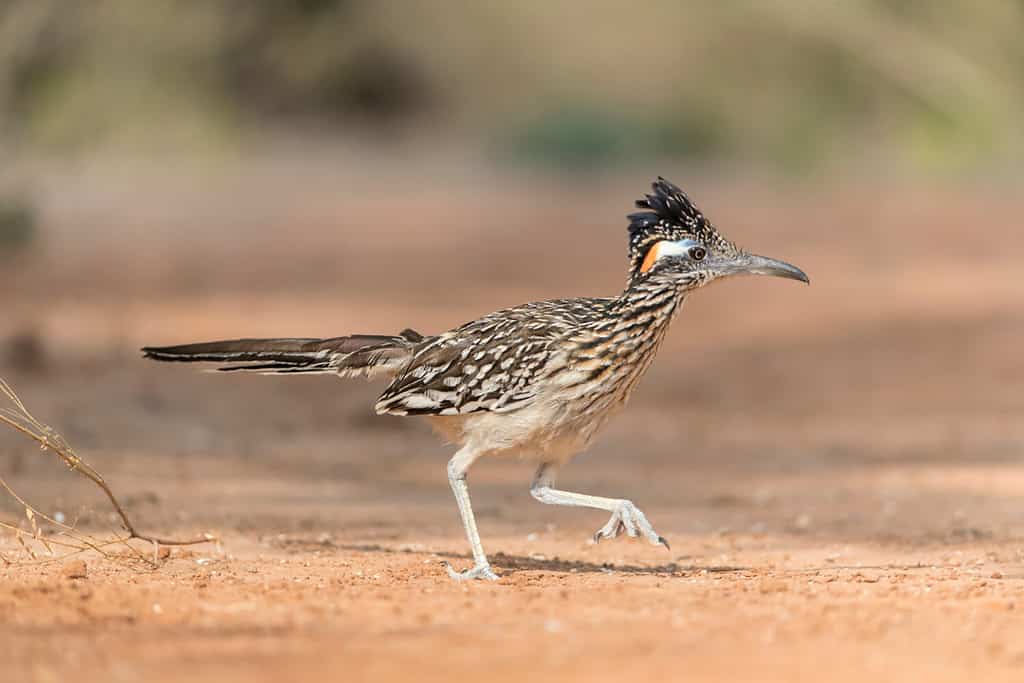
The greater roadrunner is New Mexico’s state bird.
©Dennis W Donohue/Shutterstock.com
You can find this unique bird species all year in most of New Mexico, aside from the northwestern corner of the state. Greater roadrunners (Geococcyx californianus) are common in neighborhoods and other suburban settings.
2. Dark-Eyed Junco

This little sparrow is one of the most common North American birds.
©iStock.com/graphicphoto
Dark-eyed juncos (Junco hyemalis) are present across the state throughout most of the year. There are many varieties of dark-eyed juncos and you’re most likely to see them all in the winter months in New Mexico.
3. Prairie Falcon
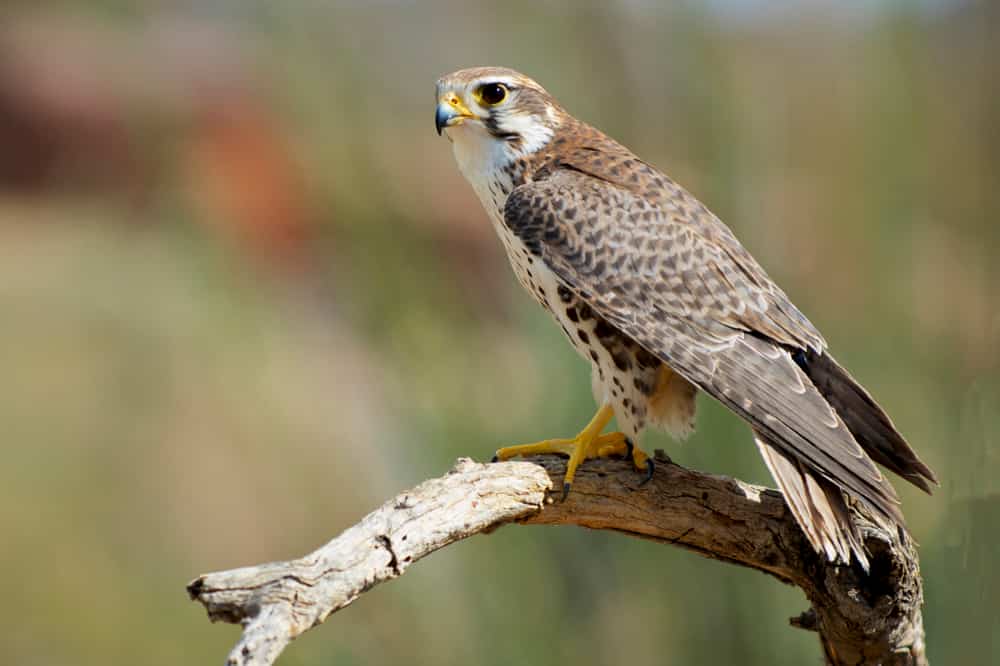
Prairie falcons live exclusively in the western half of the United States.
©Danita Delimont/Shutterstock.com
The prairie falcon (Falco mexicanus) is a common falcon for the region though uncommon in the rest of the U.S. To find this bird, look in wide-open habitats near cliffs or bluffs where they’re likely to be hunting.
4. Common Raven
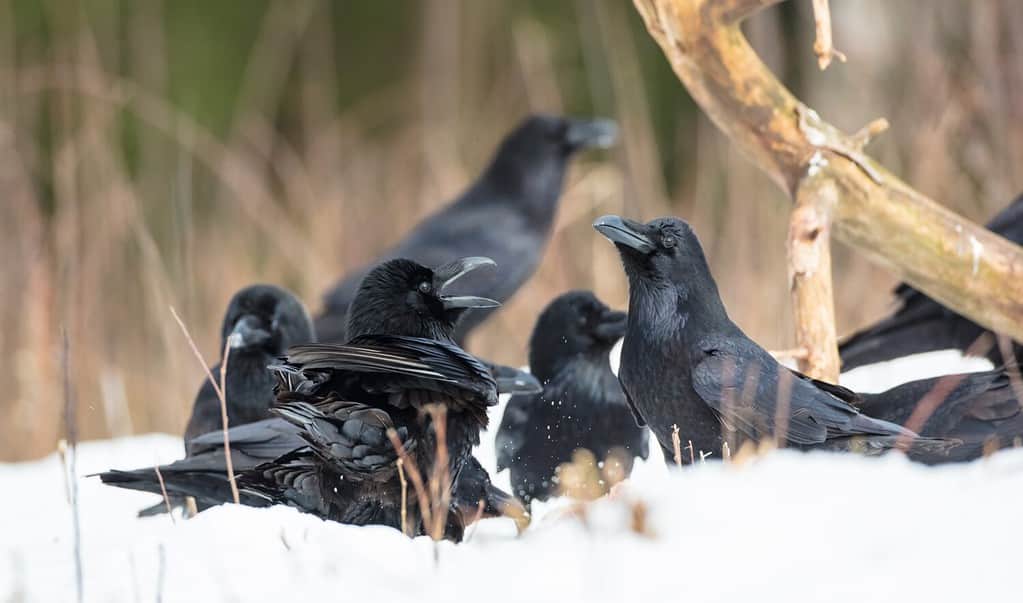
Ravens are the largest songbird
, reaching the size of a hawk!
©Simonas Minkevicius/Shutterstock.com
You’ll most likely encounter a common raven (Corvus corax) in the northern parts of New Mexico throughout the year. They are extremely adaptable and thrive in wooded foothills, forests, and grasslands near cliffs.
5. Williamson’s Sapsucker
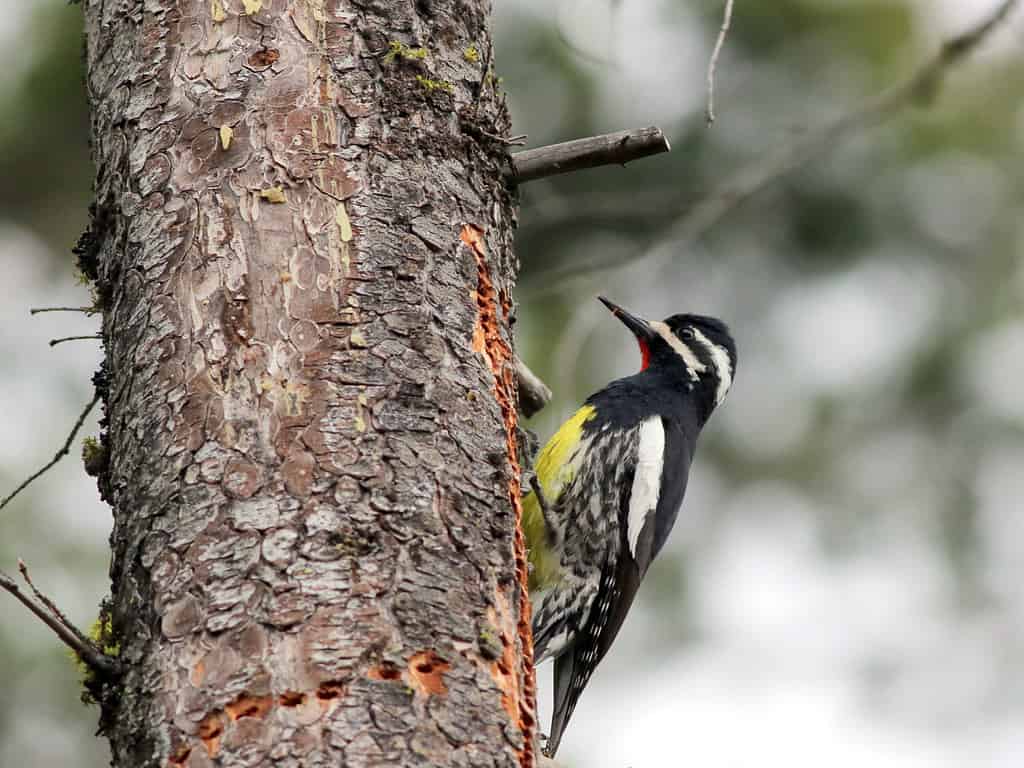
Males and females of this species differ, with males sporting a bright yellow belly.
©Randy Bjorklund/Shutterstock.com
This intriguing woodpecker species has an exclusive range in New Mexico in western mountainous regions. The Williamson’s sapsucker (Sphyrapicus thyroideus) can also be readily found in Bandelier National Monument.
6. Steller’s Jay

The steller’s jay and blue jays can mate to form hybrids.
©Nigel Jarvis/Shutterstock.com
Steller’s jays (Cyanocitta stelleri) are found in evergreen forests at high elevations and are mostly seen in the western half of the state. They tend to live in a variety of habitats from evergreen to deciduous forests, residential areas, and even agricultural areas with forests surrounding them.
7. Northern Pygmy Owl

You can spot the northern pygmy owl any time during the year, though it’ll take some work.
©Jordan Feeg/Shutterstock.com
The northern pygmy owl (Glaucidium gnoma) is one of the smallest owl species you can find. Fortunately, they’re active during the day so they’re easier to spot. Look for this ferocious raptor in tree cavities in mountainous coniferous forest regions.
8. Downy Woodpecker

Downy woodpeckers look similar to
hairy woodpeckers
but can be told apart from their behavior.
©J Edwards Photography/Shutterstock.com
The downy woodpecker (Dryobates pubescens) is an active species around birdfeeders. Their range is in most places in New Mexico aside from the south to southeastern part of the state. Look for these birds in mixed flocks during the winter along with chickadees and nuthatches.
9. Canyon Wren

Canyon wrens use their curved bills to find food hiding in crevices of rocks and cliffs.
©iStock.com/graphicphoto
Though the canyon wren (Catherpes mexicanus) has a small range in the US, it can be found everywhere in New Mexico, especially during the winter. Their preferred habitat, as suggested by their name, is dry and rocky canyons.
10. Spotted Towhee

This species of towhee is more tolerant of dry climates than other towhees.
©iStock.com/jamesvancouver
Spotted towhees (Pipilo maculatus) are a ground-nesting bird species you can find throughout the seasons in New Mexico. Keep an eye out for this black and copper bird in overgrown fields or leaf litter where they’re foraging for their next meal.
11. Golden-Crowned Kinglet
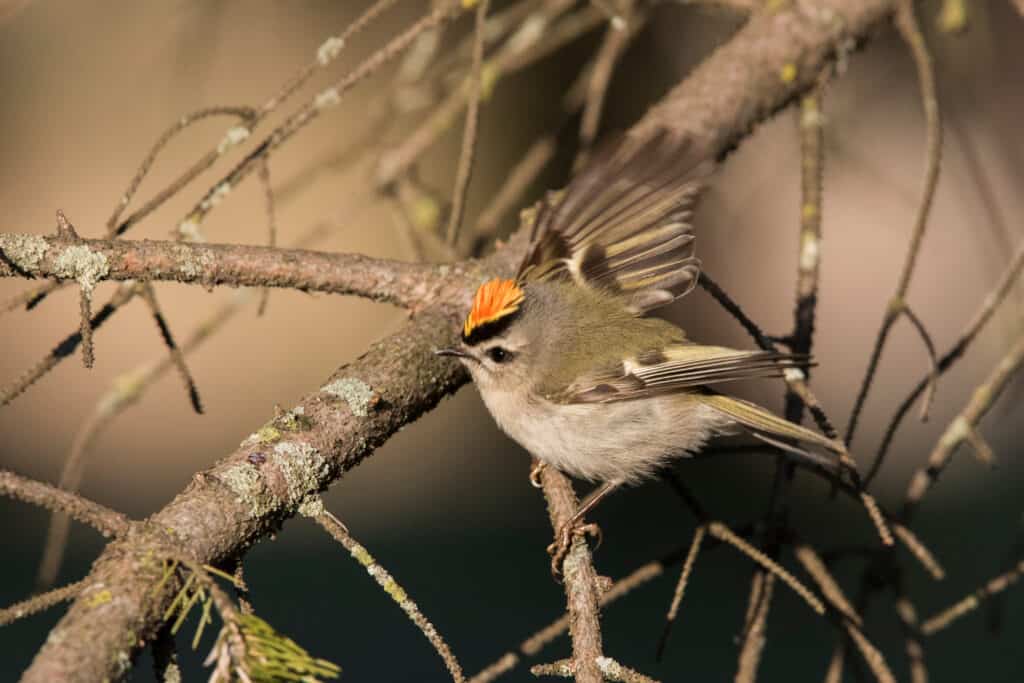
Golden-crowned kinglets have a royal sense about them, with a gold crown atop their heads.
©Mircea Costina/Shutterstock.com
This regal bird found in the winter months in New Mexico also appears throughout the state for most of the year. Your best chances of spotting the golden-crowned kinglet (Regulus satrapa) are best when your sights are set high in spruce or fir forests.
12. American Kestrel
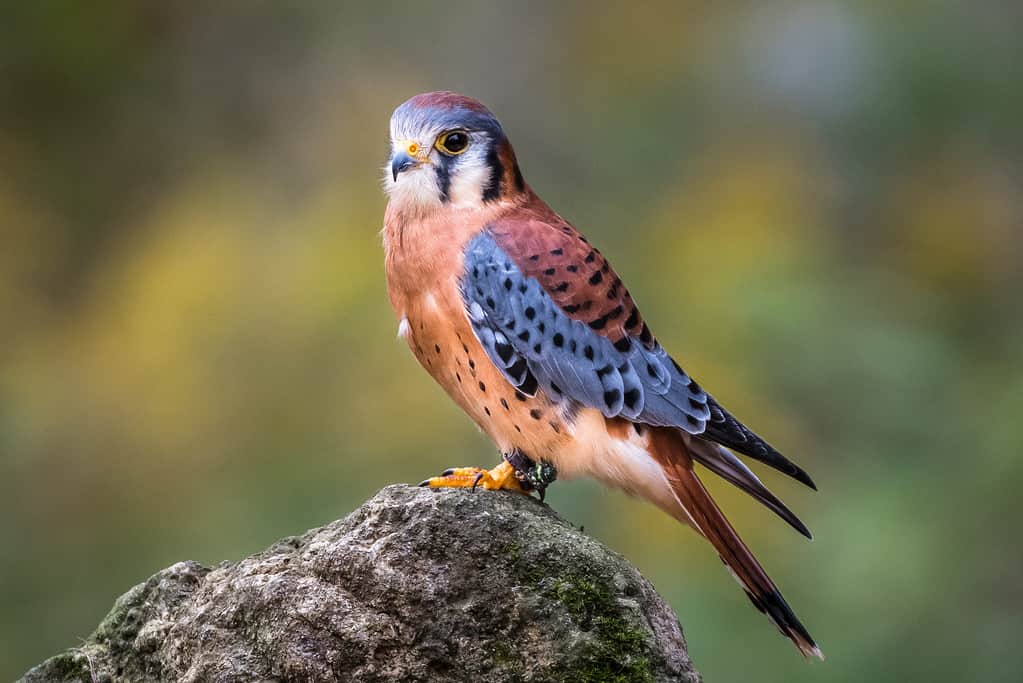
This species of kestrel is the smallest of all falcon species on the North American continent.
©Katie Duncan-Burt/iStock via Getty Images
The American kestrel (Falco sparverius) can be found all over the country and in New Mexico. To spot this gorgeous bird, look for open areas where spots to perch are available. Like other falcons, the American kestrel surveys the land for prey before diving from high places for the kill.
13. Western Screech Owl

Your sense of hearing rather than sight might be more useful in tracking down this tiny owl.
©Steve Bruckmann/Shutterstock.com
The western screech owl (Megascops kennicottii) can easily camouflage in tree cavities throughout the western half of New Mexico. Listen for their “screech” to pinpoint their location and look for a robin-sized owl in woods and desert areas of the state.
14. American Robin
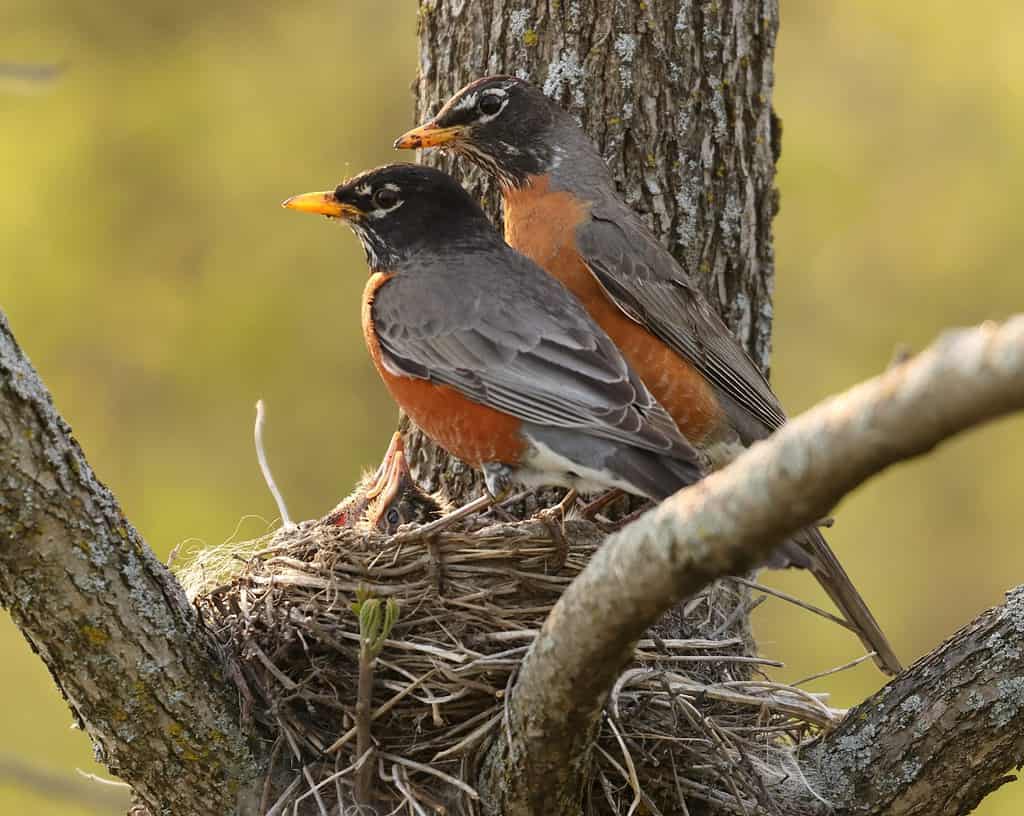
The
American robin
is one of the most easily recognizable birds in North America.
©yvontrep/Shutterstock.com
Look for the American robin (Turdus migratorius) anywhere, anytime throughout the state. During the winter months, they might move towards higher ground (or trees) but will happily go to a bird feeder in your backyard.
15. Brown Creeper
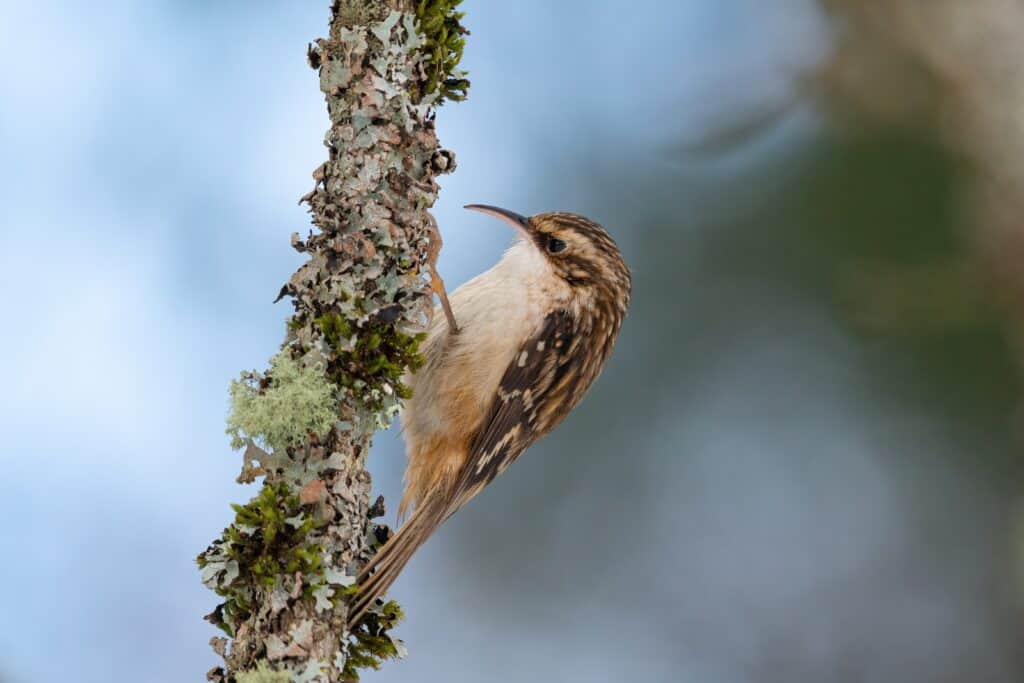
This small bird is common throughout the state of New Mexico in mixed or evergreen forests.
©2009fotofriends/Shutterstock.com
Brown creepers (Certhia americana) are hard to spot given their small size and brown coloration that provides perfect camouflage. However, their unique zig-zag pattern of moving down a tree can be a dead giveaway.
16. Mountain Chickadee
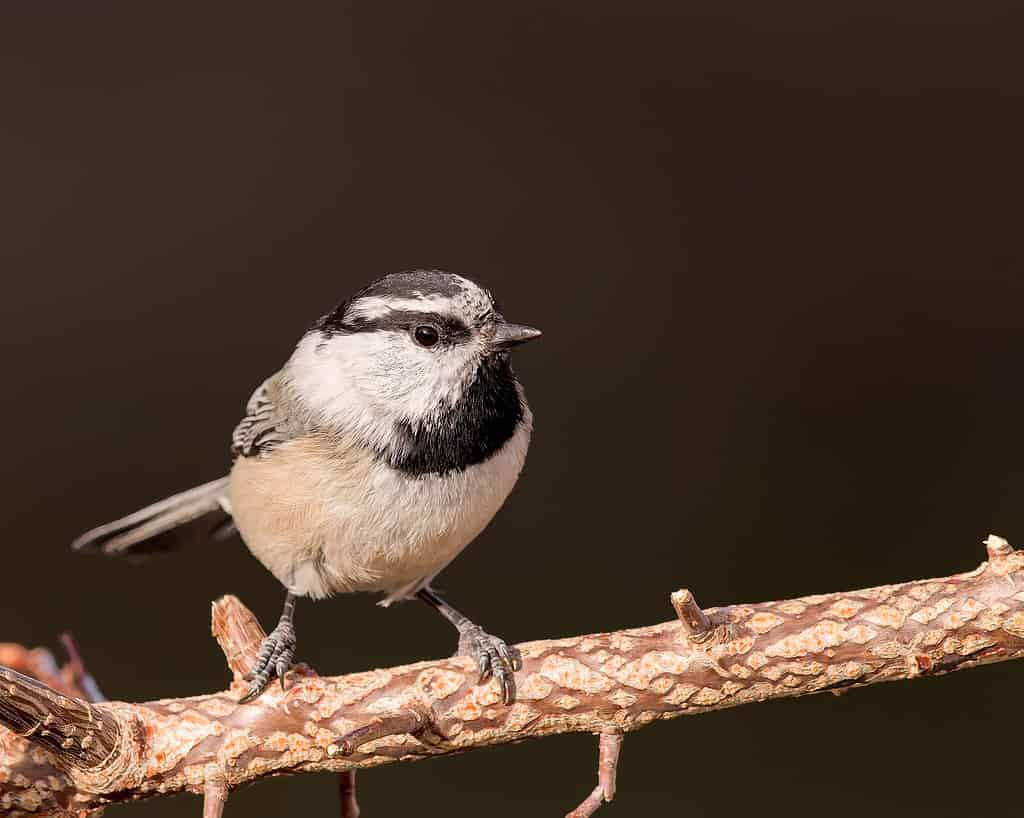
This is another bird with a
recognizable
call that you might hear before you see.
©M. Leonard Photography/ via Getty Images
Mountain chickadees (Poecile gambeli) are absent in a small portion of the south-southeastern part of New Mexico but otherwise are readily encountered everywhere else. Their preferred habitats are dry, evergreen forests.
17. Red-Breasted Nuthatch
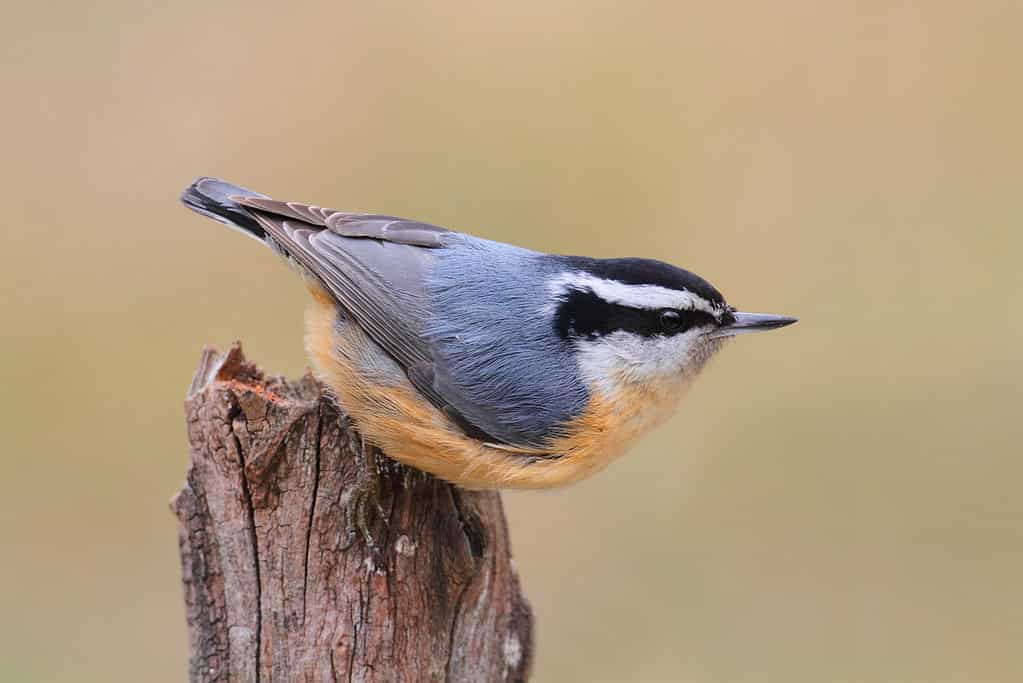
The stripes on their faces and coppery orange chests are easy ways to identify this species of nuthatch.
©iStock.com/SteveByland
The red-breasted nuthatch (Sitta canadensis) is mostly found in the upper western portions of the state throughout the year, and the other part of the state during non-breeding seasons. Find this species of songbird in the northern woods and mountainous areas of New Mexico.
18. White-Breasted Nuthatch

This is a common species of nuthatch in the US, covering at least some territory in every state.
©Jim Nelson/Shutterstock.com
The white-breasted nuthatch (Sitta carolinensis) is a more common bird species in New Mexico, ranging across the entire state even into the winter months. You can easily spot these birds in the winter thanks to their affinity for deciduous trees. Look for a white face with a black stripe along its head and nape, and a white breast and belly.
19. Pinyon Jay
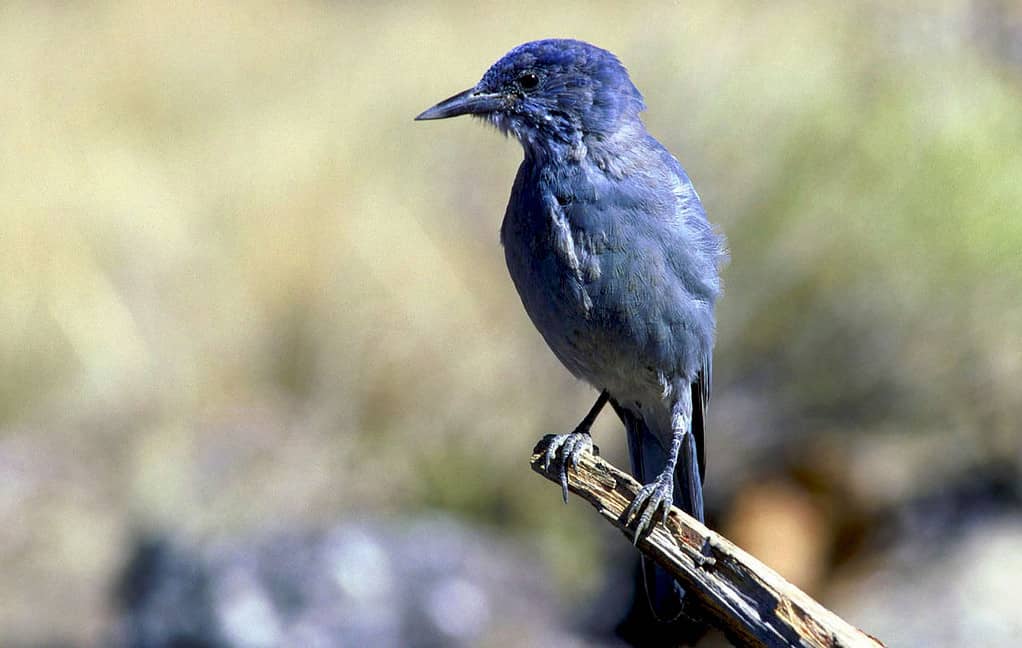
Unlike other jays, this species lacks a familiar head crest.
©Chris / CC BY 2.0 – License
Here is another jay species you can readily find in New Mexico. The pinyon jay (Gymnorhinus cyanocephalus) can be spotted in areas with junipers, pinyon pines, and scrub-oaks. To find these somewhat elusive birds, look for these birds in or on top of trees.
20. Mountain Bluebird
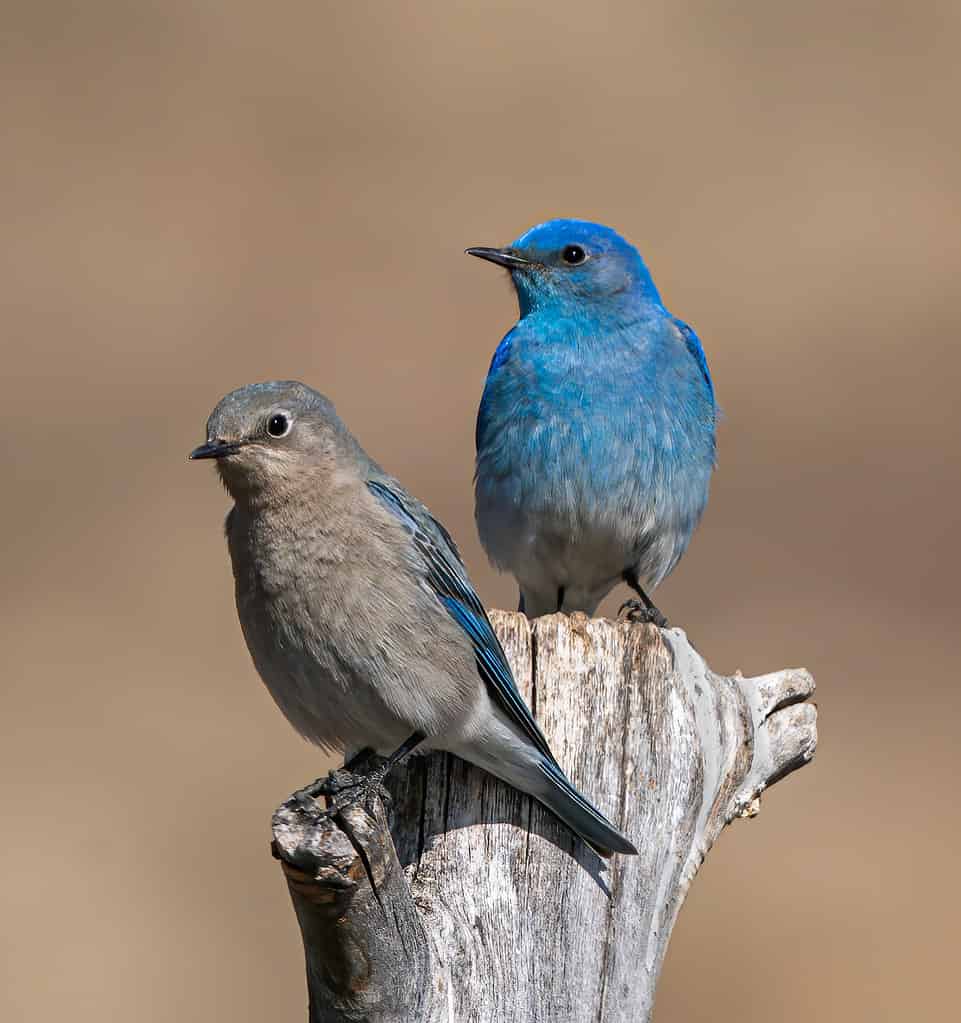
This bird species is very particular about the quality of their nesting area.
©Richard Seeley/Shutterstock.com
Mountain bluebirds (Sialia currucoides) have a small year-round range in North America but choose to make New Mexico their home throughout the winter. Their hangout preference is for aspen trees and berried juniper shrubs in the winter months.
21. Hairy Woodpecker
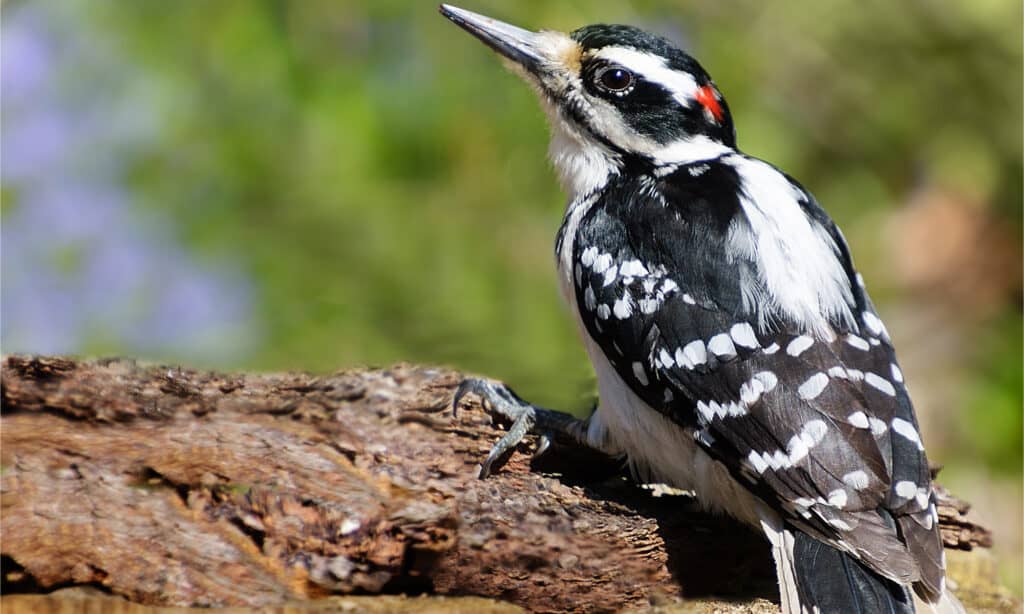
Hairy woodpeckers are larger than downy woodpeckers and have a longer bill.
©K Quinn Ferris/Shutterstock.com
The hairy woodpecker (Dryobates villosus) shares its state-wide range with the downy woodpecker. This species spends more time on the trunk of trees than branches like their lookalike relatives.
22. American Crow
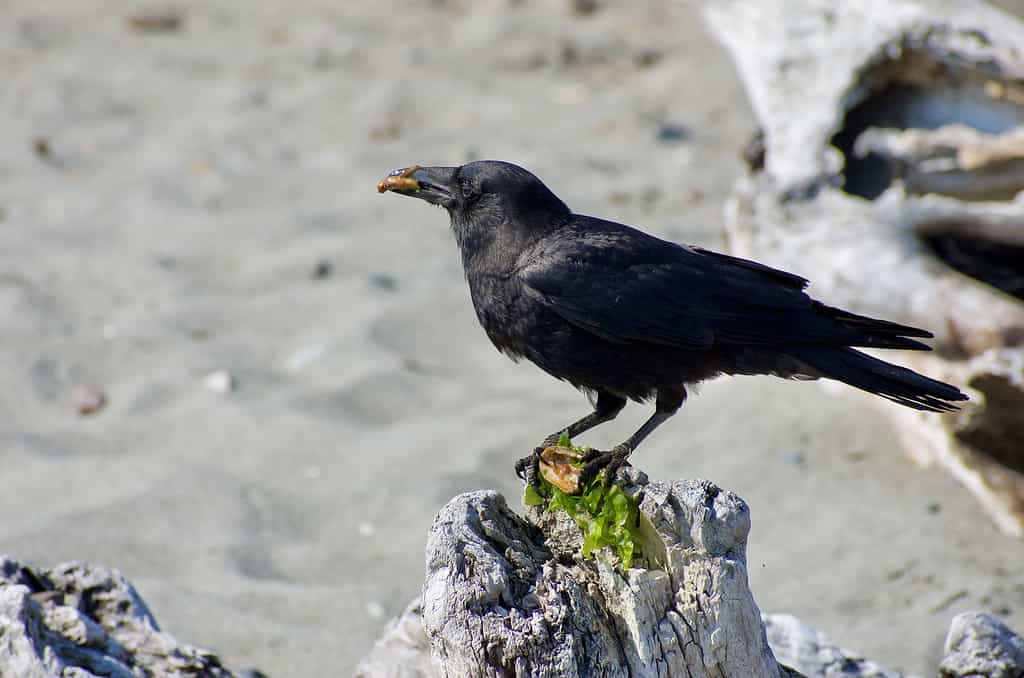
The American crow is much smaller in both height and wingspan than the common raven.
©iStock.com/DanielLacy
Despite their name, American crows (Corvus brachyrhynchos) are a rare find in New Mexico, mostly hanging out in the northwestern corner of the state. When they are present, they’re just about everywhere: residential areas, wooded areas, and especially near sources of free food.
The photo featured at the top of this post is © Jessica Guo/iStock via Getty Images
Thank you for reading! Have some feedback for us? Contact the AZ Animals editorial team.







